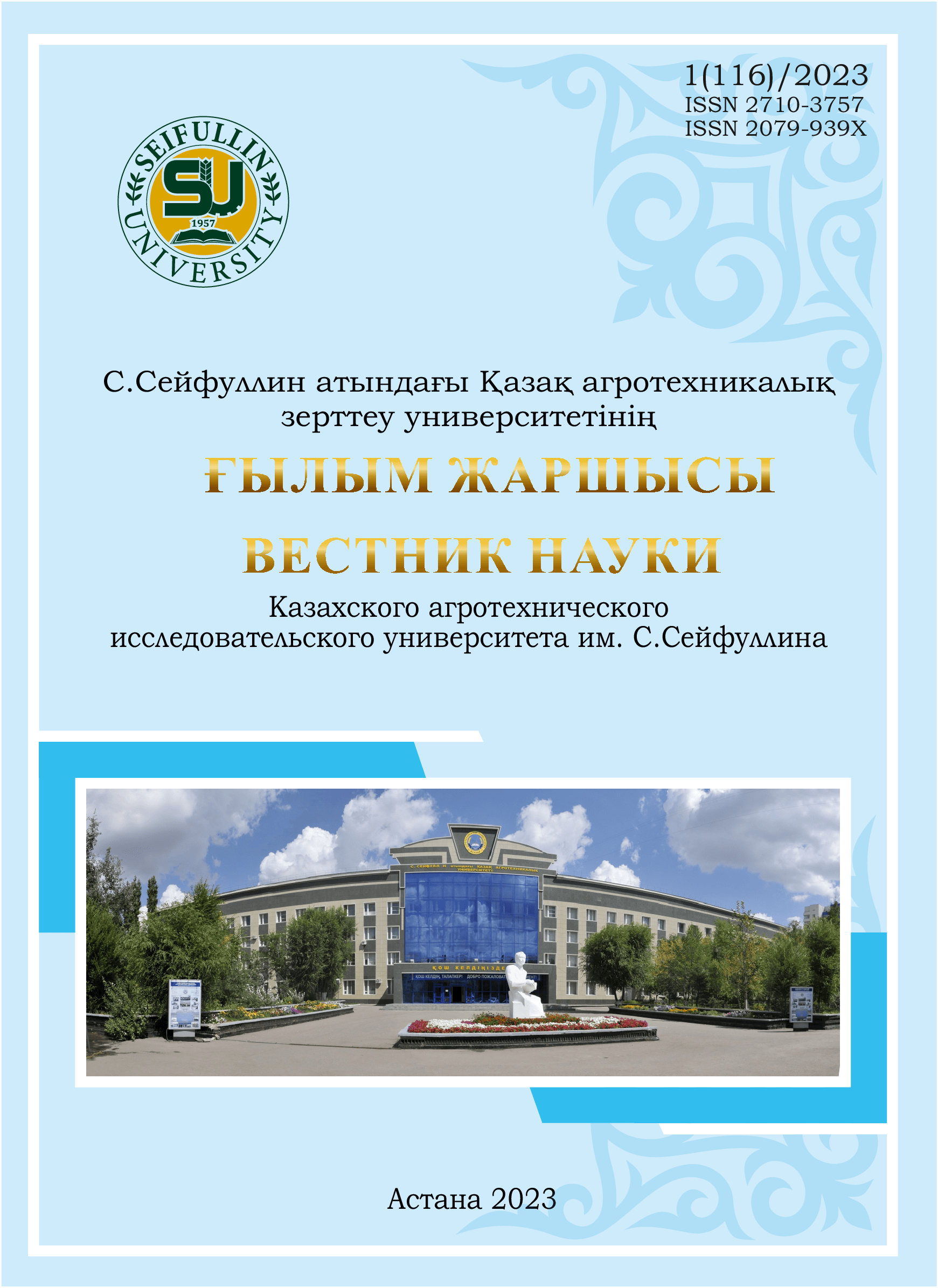FEATURES OF THE FORMATION OF BIOMASS OF SPRING SOFT WHEAT VARIETIES DEPENDING ON THE TERMS AND RATES OF SEEDING AND NUTRITION CONDITIONS
DOI:
https://doi.org/10.51452/kazatu.2023.1(116).1317Keywords:
жаздық жұмсақ бидай; сорт; биомасса; өсіп-даму кезеңдері; өнімнің құрылымдық элементтері; биометрия; корреляция.Abstract
An important role in the life of wheat culture is played by the growth and development of leaf, stem, spike and root mass. Its volume determines the structure and quality of future products. Therefore, field studies were aimed at identifying the nature of the formation of the biomass of spring soft wheat varieties, the influence of agrotechnical measures on them and the genetic characteristics of varieties. The maximum level of leaf mass of the wheat crop corresponded to the heading period, and the maximum level of total dry biomass corresponded to the period of wax ripeness. According to the features of biomass formation in spring wheat varieties (Aina, Granni and Shortandinskaya 2012), genotypic differences ranged up to ± 24.78% and were distinguished by the presence of a high correlation with yield (P < 0.05, r = 0.52-0.94) . The biomass formed by varieties of spring soft wheat is de to the presence of a close correlation with the weight indicators of the structural elements of the crop (grain weight per 1 spike P < 0.05, r = 0.51-0.85 and weight of 1000 grains P < 0.05, r = 0.4 - 0.57), and quantitative indicators (plant height - r = -0.19 - + 0.17; productive tillering - r = - 0.12 - + 0.24; ear length - r = 0.12-0.24) was characterized by the presence of a weak dependence. The level of formation of the biomass of mid-season varieties of spring wheat directly depends on the weather conditions, applied agrotechnical measures and nutritional conditions. Mid-season varieties of spring soft wheat (Aina - 7258 kg/ha, Grani -7903 kg/ha, Shortandinskaya 2012-7406 kg/ha) at an early sowing date (May 15 for the Central Kazakhstan region), with a high seeding rate (3.0 -3.5 million pcs/ha) and when complex fertilizers are applied, they form the maximum biomass. In drier years, spring wheat forms the most abundant dry biomass (4258-4915 kg/ha) at optimal sowing dates (May 20 for the Central Kazakhstan region) with a minimum seeding rate (2.5 million pcs/ha) with the introduction of only phosphorus fertilizers.

